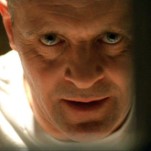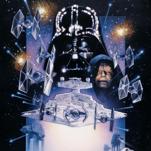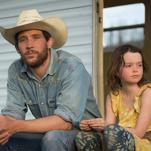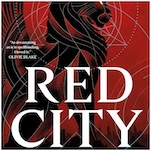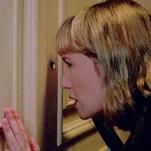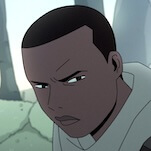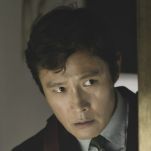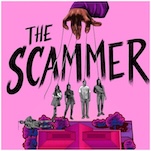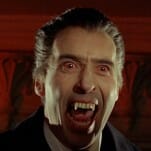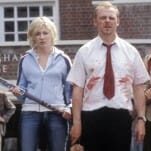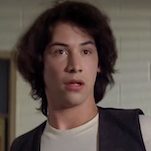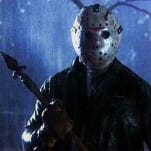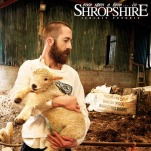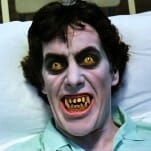Fight Night: Rob Roy’s Swordplay Was as Gritty as Its World
1995’s second most popular Highland flick had the better fight
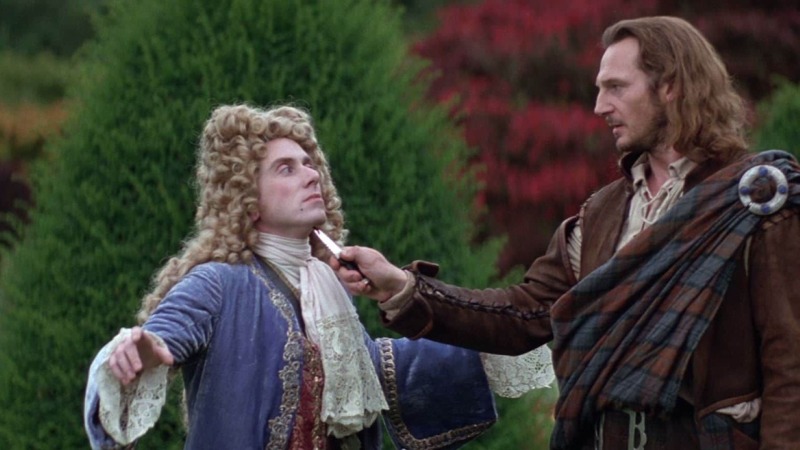
Conflict is the most basic building block of story, and a fight is the most simple conflict there is: Two people come to blows, and one must triumph over the other. Fight Night is a regular column in which Ken Lowe revisits some of cinema history’s most momentous, spectacular, and inventive fight scenes, from the brutally simple to the devilishly intricate. Check back here for more entries.
The mid-1990s isn’t the only stretch of film history featuring the Hollywood phenomenon of the dueling blockbusters—those situations where two movies with suspiciously similar premises released in the same year. But, that handful of years certainly seems heavily laden with odd doubleheaders. Tombstone (released Christmas ’93) vs. Wyatt Earp was the showdown of 1994, Dante’s Peak and Volcano erupted onto each other’s box office take in 1997, and Armageddon vs. Deep Impact was the box office’s extinction-level event in 1998. There’s always a clear winner to these things, too: Tombstone is obviously your huckleberry, etc.
The strangest year for these dueling blockbusters has to be 1995, though, when Braveheart and Rob Roy released just a month apart from each other: Two big period pieces set in Scotland during turbulent parts of its history that seem to care very little for the actual years in which anything historical actually happened. (And notably starring leading men who are not Scottish—justifiable resentment toward England is apparently qualification enough).
Braveheart was the clear winner of this contest, whether you gauge it by box office performance, cultural footprint, or how apoplectic it will make a professor of U.K. history over the course of its viewing. But Braveheart is about spectacle, and Mel Gibson still being mad about the formation of the Church of England. Rob Roy is about one guy trying to be principled and frequently choosing a nonviolent solution right up until he has no other choice. Its cast is absurdly stacked. And although Braveheart does feature some of the gnarliest battle scenes in a long while, Rob Roy has what might be one of the best one-on-one sword duels in a movie.
The Film
18th Century Scotland is a complicated enough historical backdrop on its own. To appreciate the politicking and conniving going on in Rob Roy, it will help to have some background on the exile of James Francis Edward Stuart (who was NOT his father, James II of England and Ireland and James VII of Scotland, who got booted from the throne in 1688), as well as some knowledge of things like the Acts of Union that forged what is now the United Kingdom, as well as what a Whig is. Rob Roy is set in 1713, a couple of years before a real pro-James uprising that failed, and during a time when the Scottish clan system was beginning to break down.
Rob Roy MacGregor (Liam Neeson, born in Northern Ireland) is a leader of a clan that is trying to survive the lean times. That means squabbling with other raggedy clansmen to steal rich men’s cattle, or keep cattle under their care from being stolen. The movie opens with Roy and his crew of kilt-clad, claymore-strapped highlanders running down another crew of cattle rustlers who stole a herd under his protection. Rather than ambush the whole lot of them by night, Roy heads in by himself to try to make their leader see sense. He won’t, of course, and Roy kills him and sends his men off into the hills.
The complication arrives in the form of a business opportunity that goes south. Roy strikes up a deal with a local noble (Brian Cox), a middleman of the Marquis of Montrose, to front him money to go buy more cattle. Cox is in thick with a callow English nobleman, Cunningham (Tim Roth and his cheekbones). Cunningham is an enfant terrible who has landed himself a period of exile in Scotland with no income, which he’s spending womanizing and getting into pointless duels. It’s established in an early scene that Cunningham is not to be underestimated. A catty exchange at court between Cunningham’s local sponsor, Montrose (John Hurt) and the Duke of Argyll (Andrew Keir) leads to Cunningham stepping into the dueling ring with a big brute of a swordsman.
It may surprise some readers to learn that I am something of a sword guy. One of the most exciting things about this movie’s fights is that they’re happening in what could arguably be the last hurrah of swords being relevant anywhere at all—the bayonet was already in use during the Jacobite wars, and Rob Roy’s characters are all strapped with single-shot firearms throughout the movie. The one-handed, basket-hilt, swept-hilt, and cup-hilt sword designs that you see in Rob Roy all look to be fairly period accurate. Putting it one way, these swords are more or less the final, practical evolution of the sword, apart from becoming an ornament on certain military dress uniforms.
Roth plays Cunningham as a malicious, mincing fop, purposefully effeminate in dress and manner and so out of place in this Gritty Manly Scotland. It’s an unfortunate shorthand, but beneath it, Cunningham is a cruel and sadistic predator. That includes his choice of weapon. You’d classify his weapon as a smallsword today, a smaller version of a rapier. It’s designed to move quickly and inflict stabbing wounds that killed victims agonizingly slowly. Roth and his stuntmen make it took elegantly menacing.
Keen to get a kickback off the skullduggery, Cox informs Cunningham of his deal with Rob Roy’s clan, and Cunningham murders Roy’s messenger and steals the money that was lent to Roy’s clan. All of this is done without Montrose’s knowledge, but Montrose naturally wants to know what Roy will do to recover his lost investment. Meeting with Montrose and Cunningham, Roy is apologetic and honest. But when Montrose offers him an out—just denounce the Duke of Argyll as a Jacobite and he’ll forgive some of the debt!—Roy won’t do it because it’s wrong and contemptible. Montrose is less than understanding.
Roy goes on the run, but Cunningham comes to his house with a bunch of British troops and rapes his wife (Jessica Lange, doing her best in a role that gives her many, many thankless choices). The middle portion of the film is Roy evading capture and counseling his clansmen to endure the dragnet falling down around him for the sake of his and their own honor. Some mention is made, by Roy and by Montrose, of the clan starting to poach Montrose’s cattle and lands, but this misbehavior takes place entirely offscreen.
My one note on the historical accuracy of all this is that it seems to loosely follow historical accounts of Rob Roy, versions of which were already circulating among highlanders during the man’s lifetime and which caught the eye of balladeers like Sir Walter Scott and William Wordsworth. The historical Roy did run afoul of the Marquis of Montrose, did poach a bunch of his cattle, and pissed off the law enough that even after most other groups that had participated in the 1715 Jacobite uprising were legally granted amnesty, Roy’s clan specifically wasn’t. In the film, anyway, Roy eventually discovers the full truth of the treachery behind his situation, is brought under the countenance of the Duke of Argyll, and is granted the right of settling the matter in a duel with Cunningham.
Rob Roy is that rare historical movie that makes its setting look as dank, as smelly, and as bodily-fluid drenched as it probably was in reality. These are people who eat and drink, piss and shit, and have sex. You can smell this movie. It stands to reason that its climactic battle is one that’s also marked by a sense of nervy, sweaty realism.
The Fight
For a boxing match or MMA fight or other real-world matchup, you want two opponents of roughly equal stature for a good matchup. In film, though, it’s so much more interesting the more disparity there is between opponents. This is the rare case where the hero is actually not the smaller combatant, up against the big hulking brute. There are plenty of reasons that Liam Neeson has parlayed a career for himself as an action movie bruiser, but the fact he’s 6’ 4” and full of Irish elan are two big ones. He makes Tim Roth’s completely average 5’ 8” look tiny. But it’s not a fistfight, it’s a swordfight, a prospect that almost completely reverses the men’s advantages: Rob Roy is bigger, and therefore slower and an easier target. As the two square off inside a castle, observed by their noble sponsors, the difference between the two looks almost absurd.
There’s also a huge difference between their chosen weapons. Roy wields the iconic basket-hilted broadsword, and it’s a handsome one. The extremely Scottish sword is for clashing. Cunningham has his smallsword, which is for thrusting.
And yet, the film has done an excellent job of selling Cunningham’s threat. He dances around Roy in the opening of the fight, stunting on him, tiring him out. As the fight continues, Roy keeps getting wounded, and Cunningham keeps dancing out of his range.
What’s fascinating about it, besides how frustrated and scared you feel for the hero, is that this is not a movie swordfight, which are usually profoundly stupid. In most movies, it never really matters what kind of sword someone is using. In the hands of the principal characters, they become indestructible lengths of titanium alloy, sparking off of one another, cutting straight through plate armor, or chopping things in half even if they are thrusting swords. If the blades are any thicker than a fencing foil, they are suddenly cumbersomely heavy and slow. The middle portion of most swordfights features the two opponents just hammering their blades against the other guy’s, as if the sword blade and not their enemy’s soft, meaty organs are their intended target. Most of these cinematic contests come down to two opponents snarling at each other while pushing their blades against each other, as if the swords are two magnets with opposite charges and they can’t just, you know, pull them apart and keep fighting. You don’t need to know a whole lot about swords to know that none of these tactics would actually be useful in real life.
This fight features precisely none of that nonsense. Roy and Cunningham look like two guys trying to cut each other while also trying really, really hard not to get cut. They engage for a few maneuvers, then separate. They circle and work their feet, they probe one another’s defenses and stare each other down. Even though Cunningham is absolutely taking the initiative the whole time, Roth still looks convincingly tired and exerted. He’s absolutely still being a prick, but he’s also acting as if he needs to put more than half of his focus into not getting chopped in half. The choreography is not fancy, but that is what makes it so much more engaging to watch.
Roy finally takes one too many cuts and falls to his knees. It seems he has lost. But as Cunningham stands over him for one last gloat (as we know he will), Roy grabs Cunningham’s blade, picks up his own sword, and cleaves his foe from shoulder to navel. It’s so gross. It’s so awesome.
The Fallout
Yet, a broadsword is still less hefty than a good two-handed claymore. Braveheart won just about every Oscar and carried the title of Most Rage-Fueled Film From A Former British Colony right up until Jennifer Kent’s The Nightingale. Rob Roy sadly is not remembered nearly as widely or fondly as Mel Gibson’s louder, less historically accurate, and way gorier war spectacle. It could be argued, at least, that Neeson’s good turn in Rob Roy set him up for an altogether different kind of swordplay in just a few short years when he starred in a little-known indie flick called Star Wars Episode I: The Phantom Menace.
But I’m also not the only one who still remembers Rob Roy’s final fight scene as standing out for its brutal, gritty, real-world artistry, and I think it helps that the fight so handily mirrors the preceding film’s theme. Rob Roy is about the pain of enduring the seemingly unendurable, just for honor. In its way, the fight is that struggle in microcosm: A man boxed in by his enemy, stubbornly sticking to the only way he knows how to fight, sticking it out through pain and humiliation right up until he finally sees his moment and seizes it.
Join us next month for a long time (not a good time). It’s Rowdy Roddy Piper vs. Keith David in the world’s longest fistfight as we revisit They Live.
Kenneth Lowe is a regular contributor to Paste Magazine. You can follow him on Bluesky @illusiveken.bsky.social. To support his fiction, join his Patreon.








